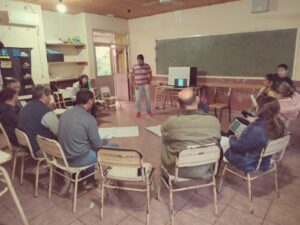Nideport and challenges in biodiversity conservation
Despite positive trends in conservation investment and emerging opportunities for biodiversity conservation, attracting private capital to this sector is challenging. Investments in nature and biodiversity conservation are considered high risk and therefore require high returns and transparency regarding their impact.
Achieving conservation goals and making a profit requires novel financial structures and strategies as innovative conservation projects tend to lack the track record or scale to attract more mainstream investors.
Search and transaction costs associated with identifying and incubating conservation projects suitable for impact investments are high.
Projects tend to be small and operate in complex environments, generally in developing countries or rural areas of emerging economies, where governance, regulatory, and infrastructure challenges prevail. Developing them takes a lot of time and effort.
To be attractive to investors, it is essential to build credibility. Investors and other stakeholders in the conservation finance market must have confidence in the impact and stability of support from project funds. Fundamental reason why, the certifications of entities recognized worldwide are vital.
In this sense, monitoring systems with appropriate metrics and indicators for financial, environmental, and social performance are essential to generate credibility. Mutual fund-backed companies depend on natural systems for the long-term viability of their resource base and financial success. As such, environmental and social parameters and criteria are not just an additional instrument of corporate social responsibility; They are critical to the business model, impact, and credibility of mutual funds.
The 2030 Sustainable Development Agenda offered broad guidelines to standardize the indicators that measure the impact of projects.
In turn, new technologies can play a key role in improving transparency and measuring the impact of conservation investments.
Nideport is a project that emerges from an ecosystem of technologies that simplifies the investment process, both for companies that need to offset their emissions and for the individual who has an investor profile focused on impact investments and environmental care.
The unit of exchange of biodiversity, or “currency”, is one hectare of a preserved or restored ecosystem that will be managed for this purpose for 100 years.
Finding suitable terrain has proven to be a challenge and a risk. It takes a lot of time and resources to find not only suitable land, but also a suitable owner who is willing to commit to long-term conservation or restoration plans. The technical and legal challenges of selecting sites for compensation activities are particularly challenging and require multidisciplinary teams.
Nideport through its ecosystem of technologies, monitoring systems, and certified processes, achieved conservation goals that at the same time generate tangible and scalable profits.






